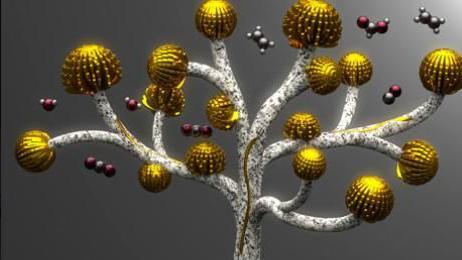'Nano-flowers': How these artificial leaves could create fuel for the future

This tiny bit of tech could help sustainable fuel bloom
- Published
Scientists have come up with a brand new futuristic way of creating chemicals from scratch - by using the natural world as inspiration.
Researchers from the University of Cambridge and the University of California, Berkeley have attached 'nano-flowers' to an artificial leaf to try and recreate the way in which plants produce their food.
'Nano' is short for nanotechnology, which is a science that deals with very, very small materials.
The nano-flower clusters they created were around five hundred times smaller than a millimetre.
The study was led by Dr Virgil Andrei, who said that the team's developments "may reshape the way we produce fuels and valuable chemicals sustainably".
More stories like this
CES 2025: Top picks from the future tech show
- Published9 January
Clean energy: Why are some people upset over the government's plans?
- Published4 February
Your Planet: Environmental news from around the world
- Published5 days ago
A key inspiration behind this is the way that plants convert sunlight to food - a process called photosynthesis.
Plants take light, water, and carbon dioxide - a chemical found in the air - to create glucose and oxygen, foods that the plant use as fuel.
Like this process, scientists have been able to build artificial leaves to make fuel of their own.

Plant leaves held the answer that the scientists were looking for
In the experiments, the leaves were made from solar cells and were able to create chemicals from carbon dioxide, water, and a commonly found organic compound called glycerol.
The copper nano-flowers kick started the process of transforming carbon dioxide into useful chemicals.
This included ethane and ethylene, two very important chemicals that haven't been made in this way before, that can be used for liquid fuel and plastics.

The process also produced chemicals that could be used in medical products to help people who are unwell
Scientists have used artificial leaves to create chemicals before, but this is the first time that copper nano-flowers have been used to make more complex chemicals from the process.
A really important part of this development is that these chemicals were made without any additional carbon emissions.
Carbon emissions are caused by burning fossil fuels like coal, oil, and gas, and are a key driver of climate change.
The team behind this new bit of tech say that their work shows that they can create 'clean' chemicals and fuels, made from natural materials, and without releasing any more carbon.
